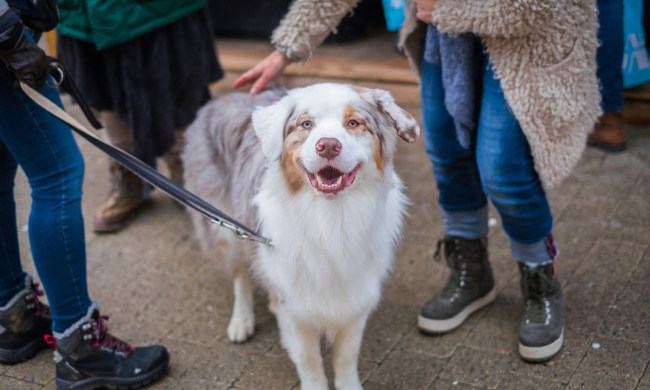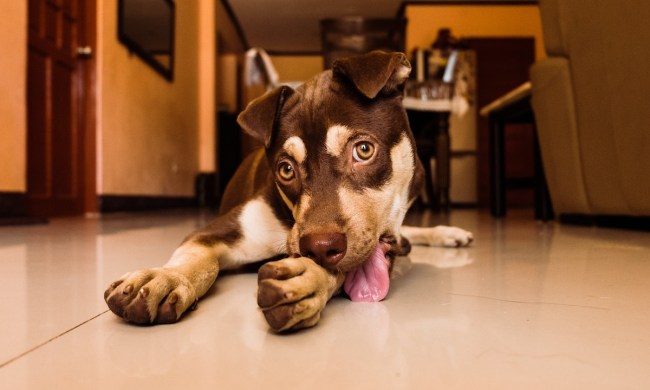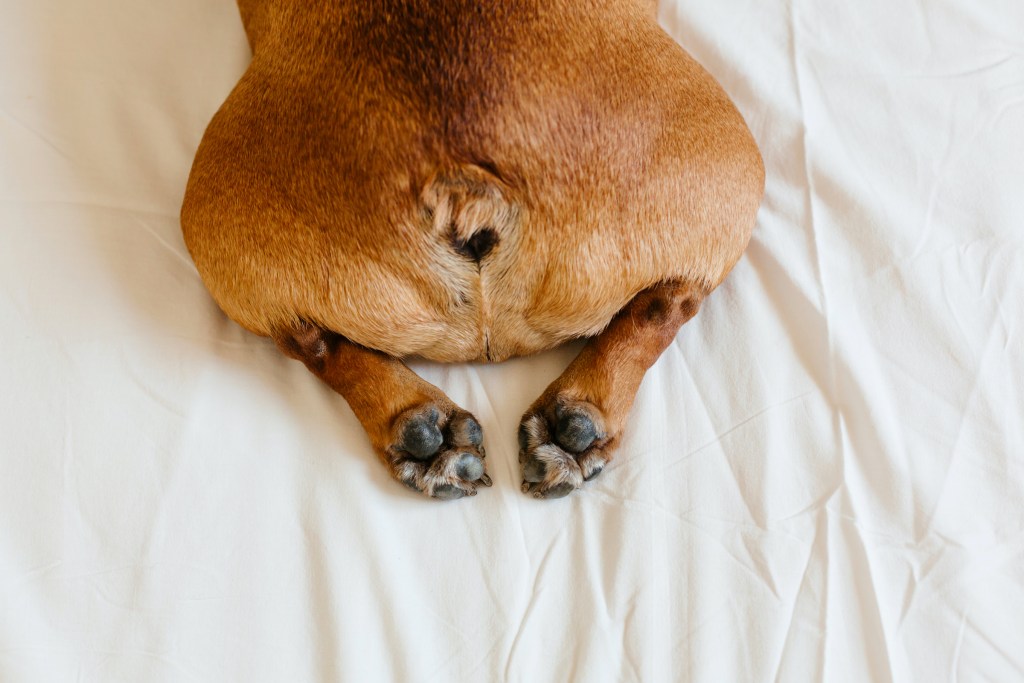
It’s hard not to relish daily walks with your dog. You both get fresh air and much-needed exercise, and seeing your dog explore and discover the world is oh-so-fun. Afterward, you and your pup might even engage in a cozy snuggle session on the couch. What could be better?
Dogs also walk in small amounts at home, whether during a play session or a trip to the backyard, and paw health is essential to keep them comfortable and walking. If one or more of your dog’s paws gets injured or infected, mobility can be tricky, painful, and sometimes impossible. As a pet parent, the last thing you want is to see your fur baby in pain. Injuries might be inevitable, but understanding the causes, signs, and treatment for a dog paw infection can ensure your pet gets the proper care as soon as possible. After all, early detection and treatment can prevent the condition from getting worse.
Here’s what you need to know.

What causes a dog paw infection? You can help your pup avoid paw discomfort if you know what to look for
As much as we’d like to give you an easy answer, several factors can contribute to a paw infection. Here are a few common ones.
- Allergies leading to a secondary infection. Researchers say that allergic reactions to food could trigger a secondary bacterial or fungal infection.
- Bacteria or fungus. Bacteria or fungi can cause deep paw infections, swelling, and discharge. That includes yeast infections, too!
- Excessive licking. When a pup’s paws get irritated, they may try to self-soothe by licking. The opposite can happen, though. In truth, all that licking can exacerbate the issue and result in an infection.
- Parasites. Mange mites, soil nematodes, and hookworms can all cause paw infections.
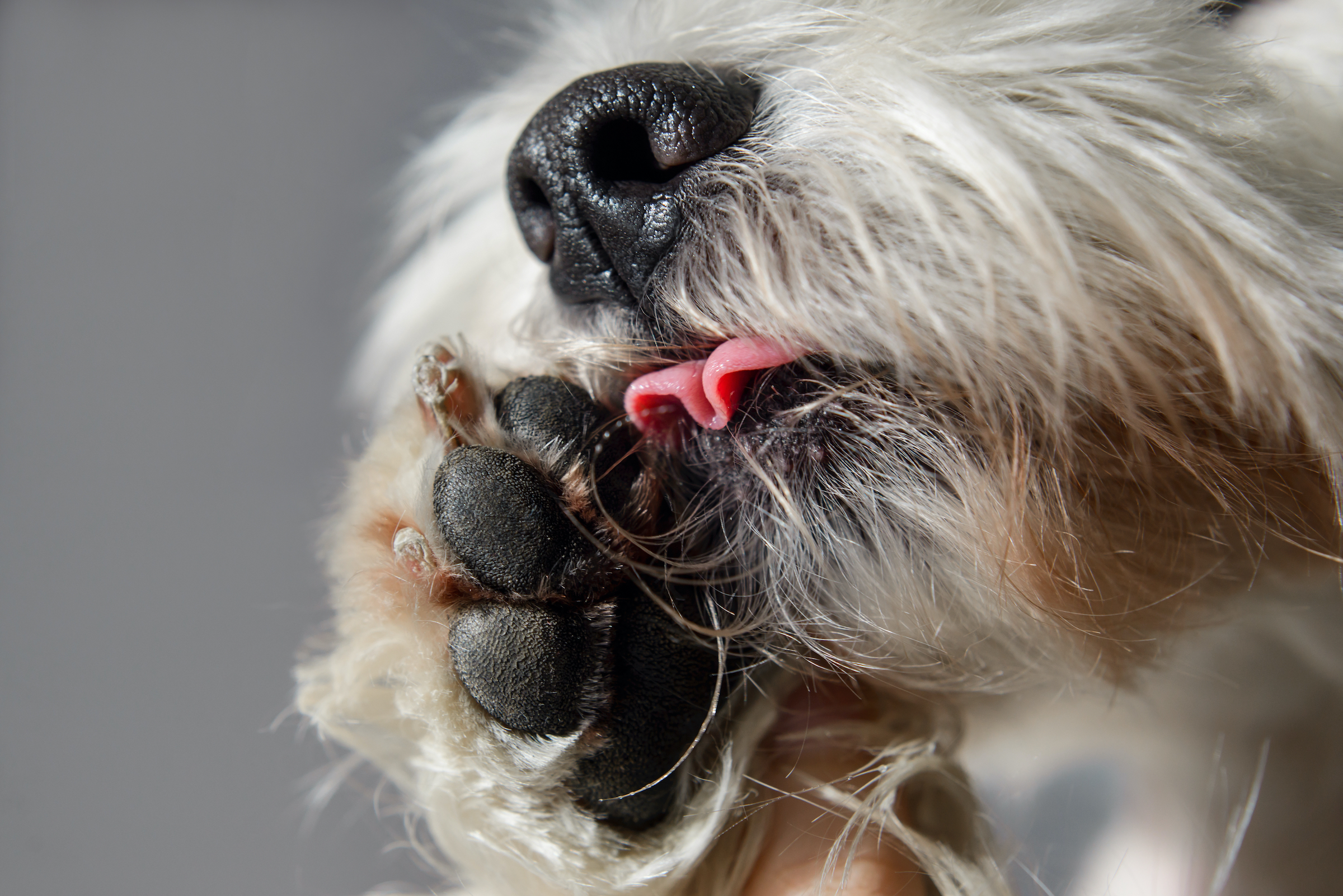
What are the symptoms of a paw infection in dogs? Look out for these signs of an issue
Early detection can help get your dog on the mend faster. Look out for these symptoms of infections:
- Lesions
- Ulcers
- Swelling
- Redness
- Bruises
- Excessive paw licking
- Discharge or pus
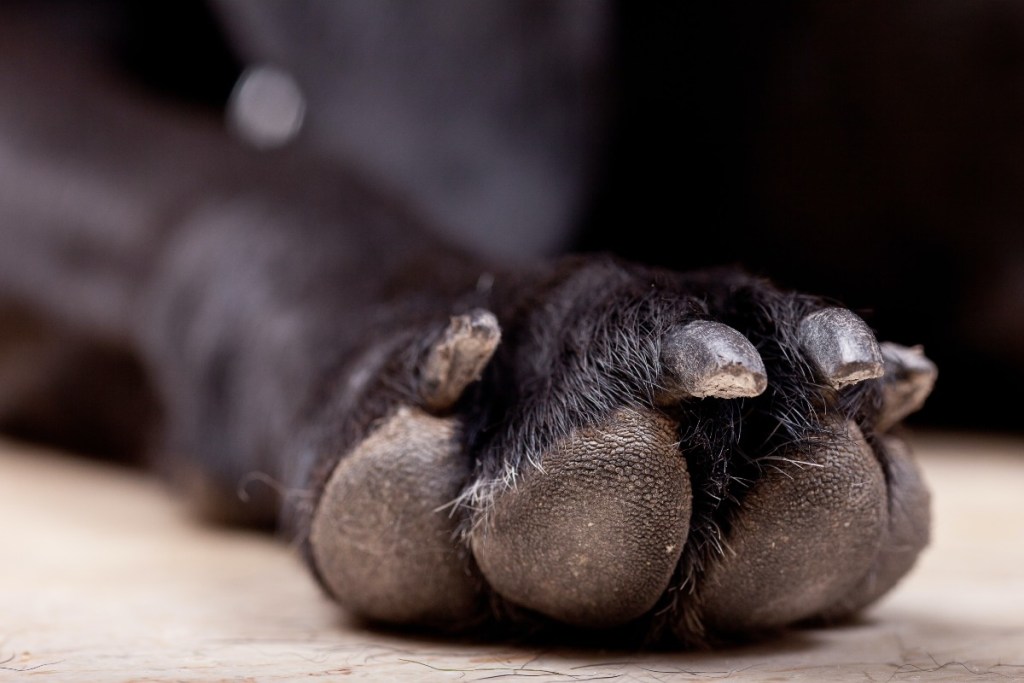
When should my dog see a vet? Are dog paw infections something to worry about?
The treatment for each paw infection will depend on the underlying cause; a vet is the best person to diagnose that. They may need to examine or even biopsy the area, but this can usually be done in one visit. If you notice signs of an infection, it’s best to see the vet immediately to rule out any other potential issues and ensure your dog gets the best treatment for their specific condition.
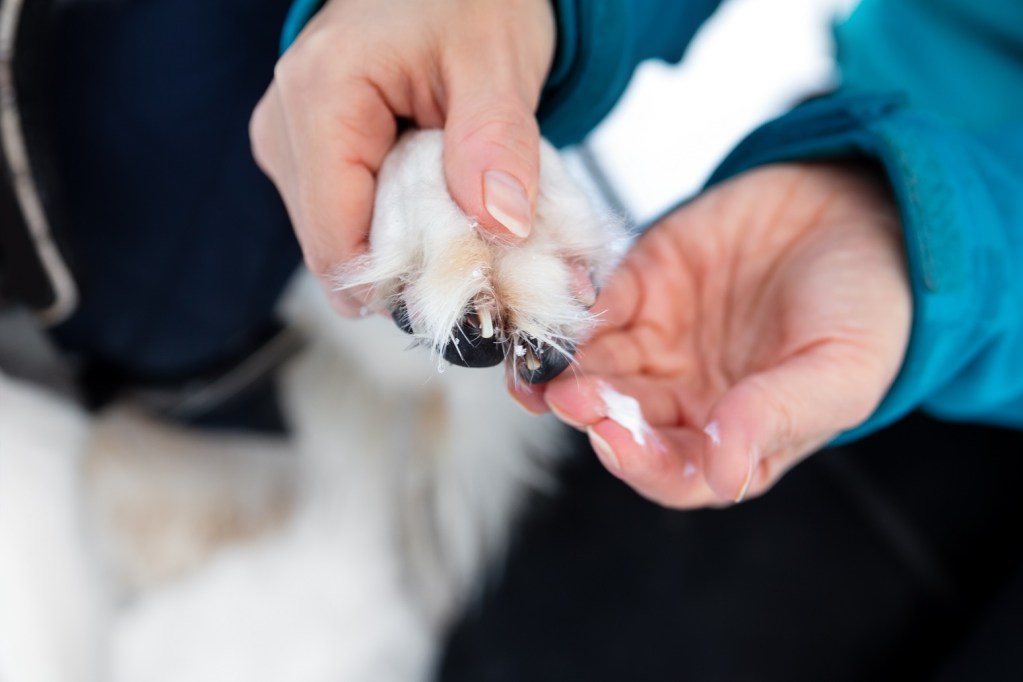
How are dog paw infections treated? Can I treat the infection at home?
Treatment varies depending on the reason for the infection. You’ll probably be able to administer treatments at home, but you might need a veterinarian’s prescription to get the right medication.
Dog paw infection treatments include:
- Antibiotics or anti-fungal medication
- A warm-water soak with an antibiotic solution mixed in as applicable
- Ointment as prescribed by the vet
Most dogs with a paw infection will heal with the proper treatment.
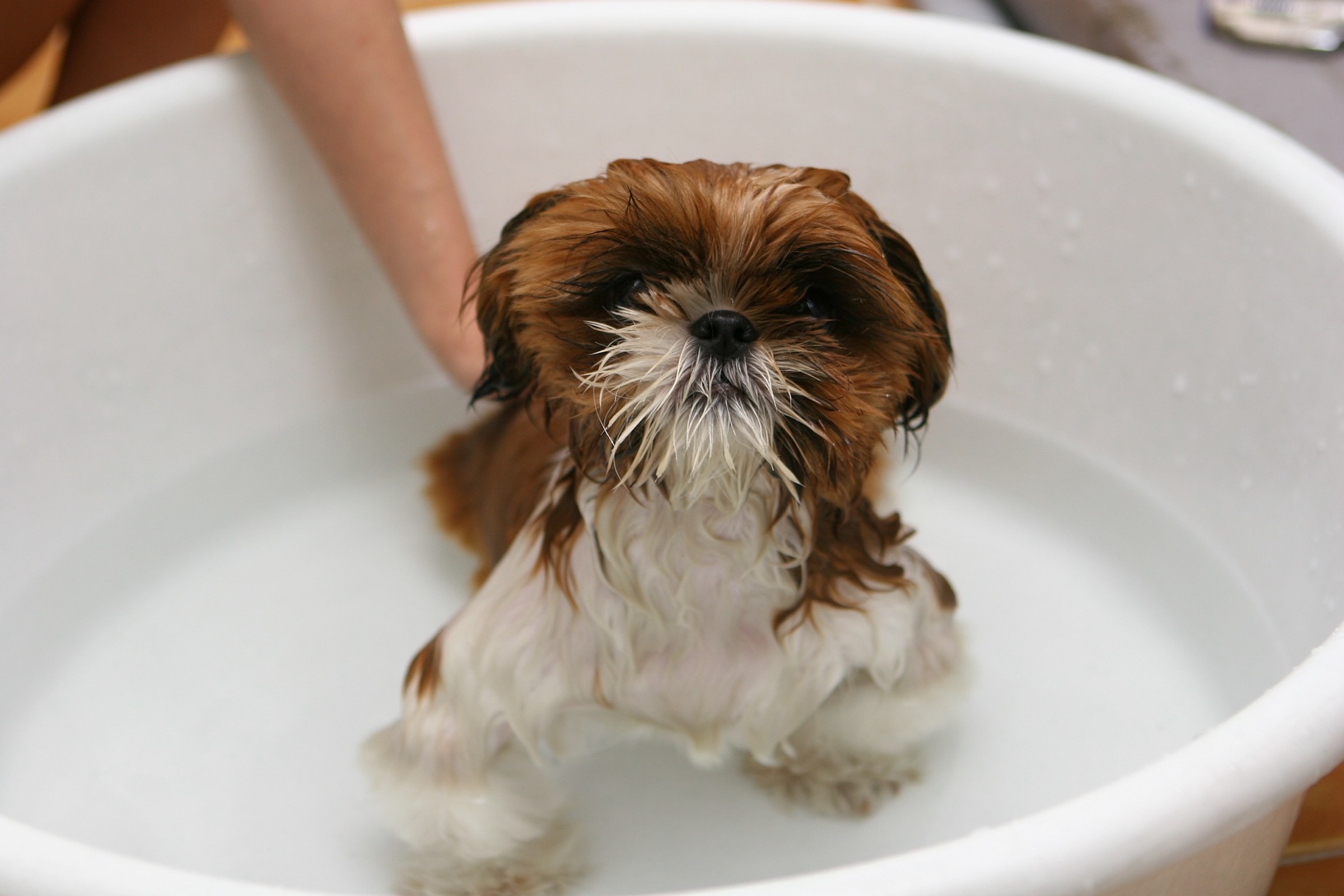
What home remedies can I use to heal a dog paw infection?
As stated earlier, many prescription medications can be administered at home. A few natural home remedies for paw irritation can also help for some minor cases. These may be better for dogs that face chronic paw infections, since you will have already seen your vet and learned what remedies will be effective in their specific case.
Some natural remedies for dog paw infections include:
- Bathing. Washing the infected area with mild dog-friendly soap and warm water can keep the area clean. Be sure to rinse thoroughly, as leftover soap can exacerbate the issue.
- Epsom salt. Soaking your dog’s feet in Epsom salt for 5 to 10 minutes can soothe irritated skin and reduce inflammation.
- Apple cider vinegar. RelieveVet explains that apple cider vinegar has both antifungal and antibacterial properties. Mix 1 part apple cider vinegar with 2 parts water, then pour the mixture into a spray bottle to apply to your pup’s paws.
- Oatmeal. An oatmeal soak can be incredibly soothing to irritated paws. The easiest way to do this will be to grind oatmeal into a fine powder, then mix it with warm water.
- Coconut oil. This oil can be a great moisturizer for humans or dogs, but it also creates a soothing and protective barrier for their skin. As a bonus, it even repels parasites.
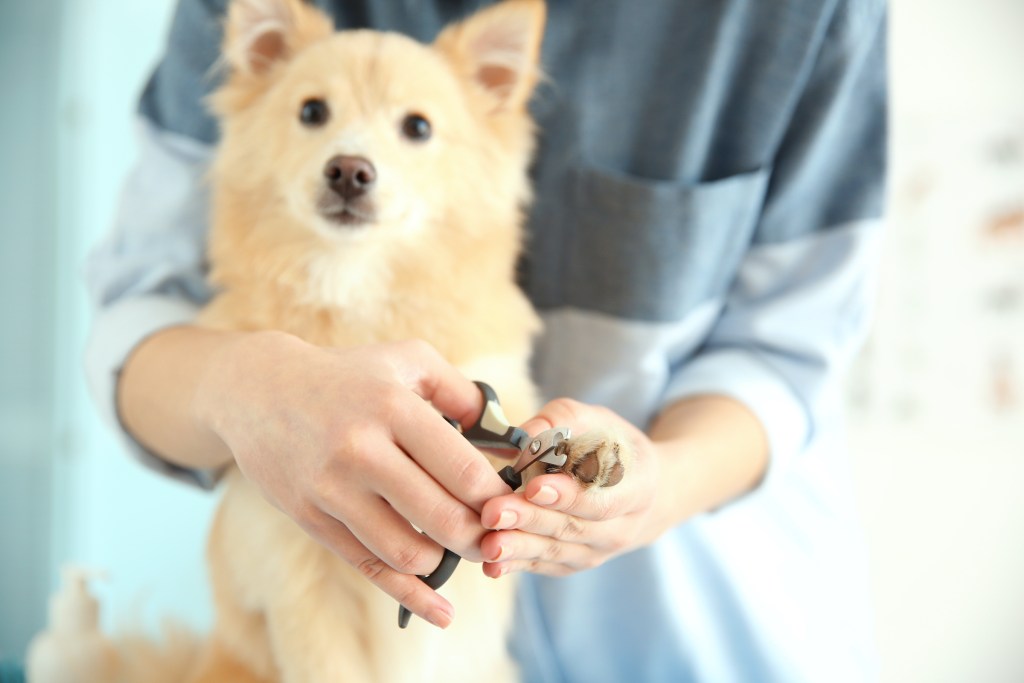
How can owners help prevent dog paw infections in the future?
It’s cliché, but true: Prevention is the best medicine. While you can’t protect your dog from everything, you can take steps to mitigate paw infection risk. Some of the best ways to protect your dog’s paws include:
- Booties. Wearing booties in the winter can protect your pet’s paw pads from the elements and salted roads, preventing excessive licking.
- Good hygiene. Wiping paws down with pet-safe wipes and regular baths can wash away irritants.
- Trim nails. Bacteria and parasites can latch onto overgrown nails and cause infections. Keep nails short.
- Checkups. Did you miss a spot? Inspect your pet’s paws regularly to ensure there isn’t any dirt or salt between them. Also, keep an eye out for open wounds, which can get infected if not covered and treated with ointment as your vet prescribes.
Seeing your pup in pain is never any fun, but paw infections can be easier to avoid and treat than you might think. A little knowledge can go a long way in keeping your dog happy and healthy, even if it means adjusting your routines. It’ll all be worth seeing your fur baby romping happily during playtime or jogging joyfully by your side. Besides, if you ever need them — your vet is there to help!

